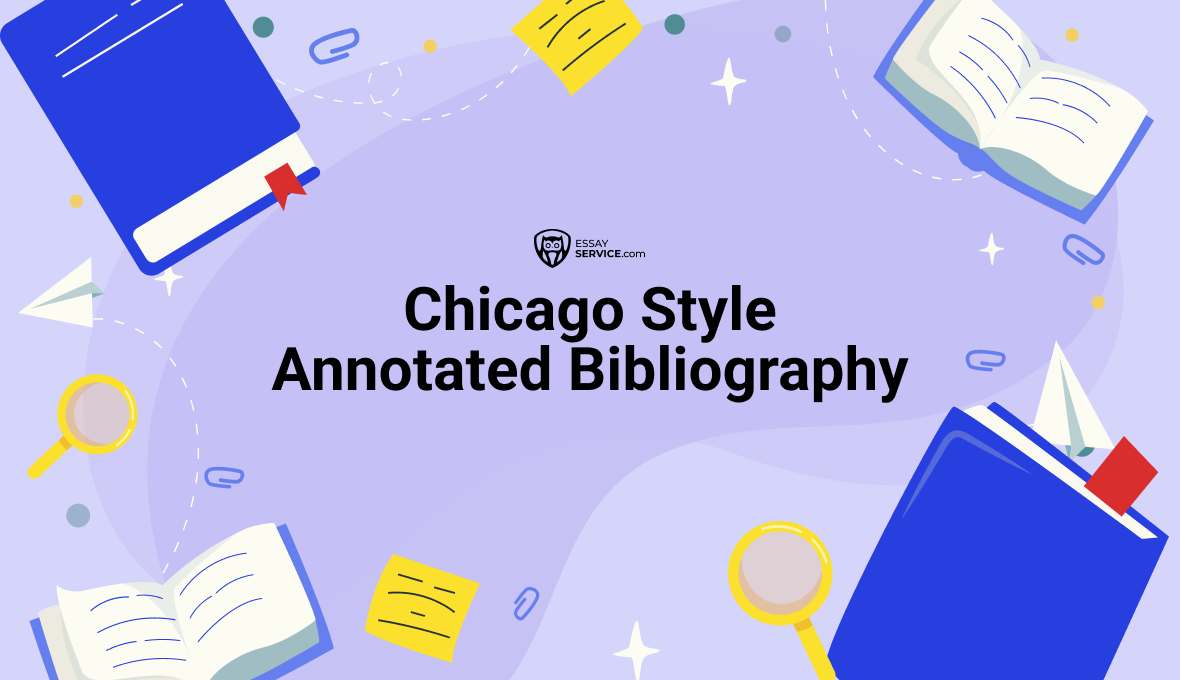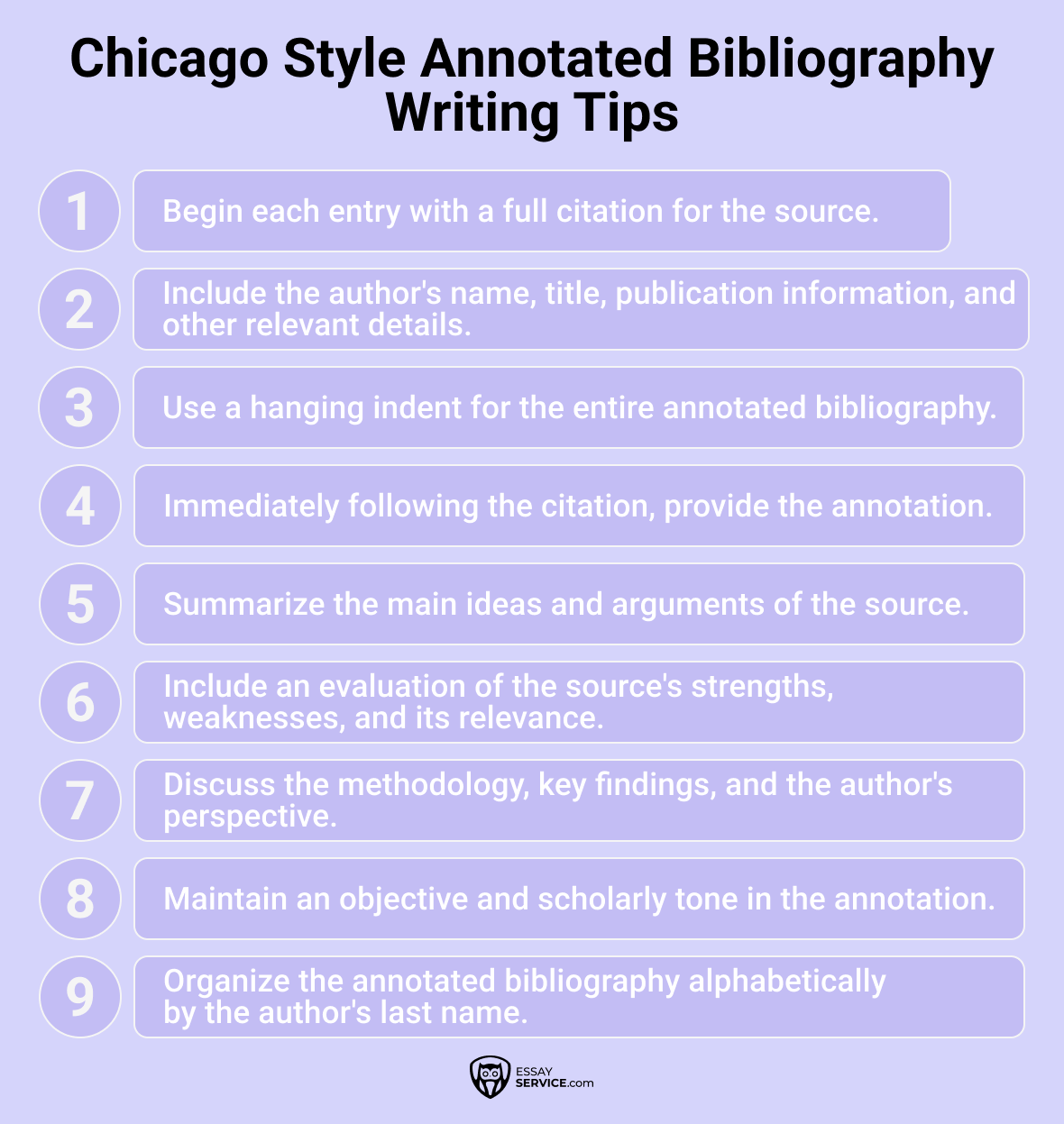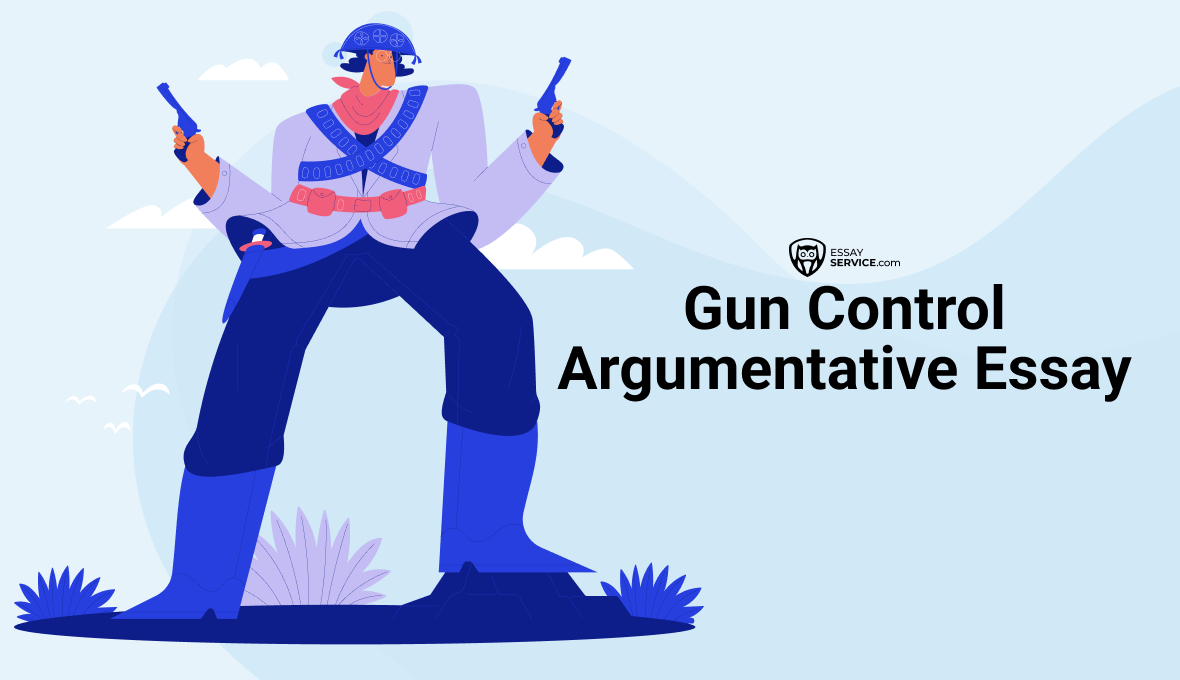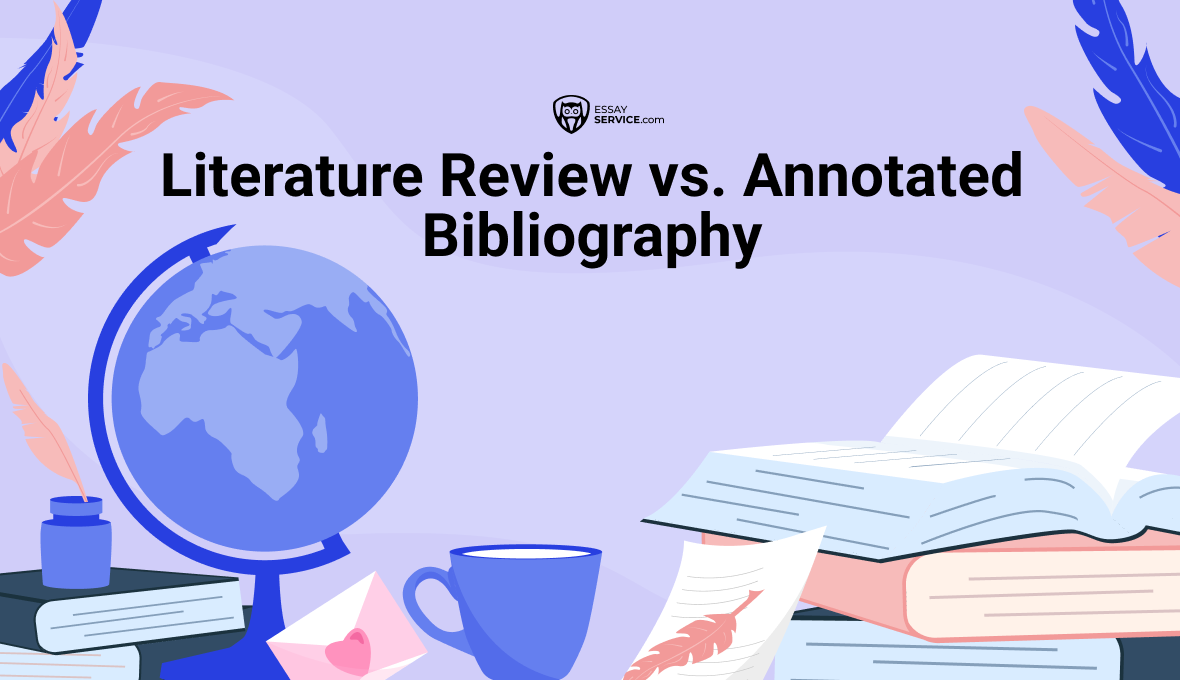
Chicago Style Annotated Bibliography Learner’s Guide
An annotated bibliography compiles citations for diverse books, articles, and other resources related to a specific subject. Resembling a Works Cited page, the commented list of references distinguishes itself by incorporating a brief footnote following each cited source. The annotation serves as a concise outline and/or critical assessment of the reference's content. Whether integrated into a broader research endeavor or presented independently, annotated bibliographies provide valuable insights into the referenced materials. If, after reading this article, you still require assistance, simply write us and any of our annotated bibliography writer will deal with this assignment.
Types of Annotations
A summary annotation provides a clear overview of the key ideas and key points presented in a book. It distills the essential information, capturing the original's central arguments, findings, or themes. The goal is to offer readers a clear and efficient understanding of the context without delving into extensive details. In essence, a summary remark answers the question of "What is this material about?" by highlighting the most crucial aspects, ensuring that the reader gains a quick comprehension of the source's overall message.
An evaluative annotation goes beyond summarization to offer a critical assessment of the original. In this type of footnote, the annotator not only summarizes the content but also provides an informed judgment on the ledger's credibility, reliability, and relevance to the paper’s question or topic. Appraising remarks often consider the author's qualifications, the methodology employed, and the overall quality of the publication. They address the strengths and weaknesses, helping readers gauge the tome's reliability and its potential contributions to the broader discourse. By offering a critical perspective, commentative explanations steer researchers in determining the suitability of a compendium for their academic pursuits.
How to Write Evaluative Annotation?
An evaluative notation involves critically assessing a publication's strengths, weaknesses, and overall relevance to your study. Here's a succinct guidebook to writing the one using a structured approach that ensures a thorough and balanced evaluation of the source:
- Read and grasp the central thesis.
- Consider qualifications and expertise.
- Evaluate the validity of research methods.
- Check the publication date and relevance.
- Consider the author's perspective and potential bias.
- Highlight clear arguments, depth of analysis, or quality of evidence.
- Critically assess gaps, flaws, or limitations.
- Reflect on the intended audience and purpose.
- Acknowledge both positive and negative aspects.
- Summarize the novel's impact on your research.
How to Write Summary Annotation?
A summary commentary provides a brief overview of a source's central ideas and key points. It helps deliver a clear and efficient synopsis of the work's content. Here's a laconic manual on how to write one:
- Grasp the compendium's main arguments and key points.
- Summarize the essential facts without delving into extensive details.
- Highlight the crucial themes or findings presented by the writer.
- Strive for an unbiased representation of the content.
- Clearly convey the central focus and message of the original writing.
How Long Should Annotations Be?
Annotations should be compendious, typically ranging from a few sentences to a short paragraph. While there is no strict word limit, aim for clarity and efficiency in conveying the work's pivotal ideas and your critical assessment. Consider the purpose and context of the assignment, following any specific guidelines provided by your instructor.
In general, commentaries in the range of 150-300 words strike a balance between providing sufficient grounding and maintaining brevity. Always adhere to the assignment requirements for the most accurate guidance on footnote length.

How to Format an Annotated Bibliography in Chicago Style?
In the Chicago guidebook, an annotated bibliography follows a specific format. Here are the general guidelines for formatting an annotated bibliography in Turabian style, as it’s also known:
Citation style
- Use the appropriate citation mode based on your version of Chicago style (e.g., Chicago Manual of Style 17th edition or Turabian).
Citation entries
- Arrange entries alphabetically by the author's last name or by the title if there is no writer.
- Include complete bibliographic information for each record, formatted according to Turabian guidelines.
Format
- Place the annotation immediately after the quote entry for each entry.
- Use a hanging indent for the entire annotated bibliography.
Structure
- Begin each paragraph with the quotation (bibliographic information).
- Provide a comprehensive rundown of the main ideas and arguments presented in the entry.
- Include an evaluation of the record's strengths, weaknesses, and relevance to your investigation.
Length
- Comments can vary in length but are typically brief, ranging from a few sentences to a short paragraph.
Organization
- Organize the list alphabetically based on the authors' last names or titles.

Chicago Style Annotated Bibliography Example
Example 1:
Smith, Alice. Navigating the Digital Frontier: A User's Guide. Chicago: TechPublishers, 2022.
In this user-friendly guide, Alice Smith explores the challenges and opportunities of the digital age. The book offers practical advice for individuals navigating the ever-changing landscape of technology, making it an essential resource for those seeking to harness the power of the digital frontier.
Johnson, Robert. "Eco-Friendly Practices in Urban Planning." Journal of Sustainable Development 28, no. 4 (2019): 223-240.
Robert Johnson's article examines sustainable urban planning practices, emphasizing eco-friendly initiatives. Through case studies and analysis, the writer advocates for environmentally conscious urban development, making a significant contribution to the discourse on sustainable city planning.
World Health Organization. "Global Immunization Trends." Accessed March 15, 2023. https://www.who.int/immunization.
The World Health Organization's website provides up-to-date information on global immunization trends. This comprehensive online resource is valuable for policymakers interested in understanding the current landscape of immunization initiatives worldwide.
Example 2:
Beyond the Stars: Exploring the Cosmos. Directed by Emily Thompson. New York: Space Films, 2020.
Emily Thompson's documentary takes viewers on a mesmerizing journey through the cosmos, exploring the mysteries of the universe. Through stunning visuals and expert interviews, the film sparks curiosity about the vastness of space and our place within it.
Davis, Michael. Personal interview. February 5, 2023.
In a personal interview, Michael Davis, a leading expert in artificial intelligence, shared insights into the ethical considerations surrounding AI development. His firsthand perspectives contribute a valuable human element to the ongoing discourse on the responsible use of artificial intelligence.
Lee, Jennifer. "Gender Disparities in STEM Fields: A Longitudinal Study." Journal of Gender Studies 22, no. 1 (2018): 67-89.
Jennifer Lee's academic paper provides a thorough analysis of gender disparities in STEM fields over an extended period. The longitudinal study offers valuable insights into the factors contributing to these disparities, contributing to the broader conversation on gender equality in science, technology, engineering, and mathematics.
Frequently asked questions
New posts to your inbox!
Your submission has been received!



 (1) (1).webp)